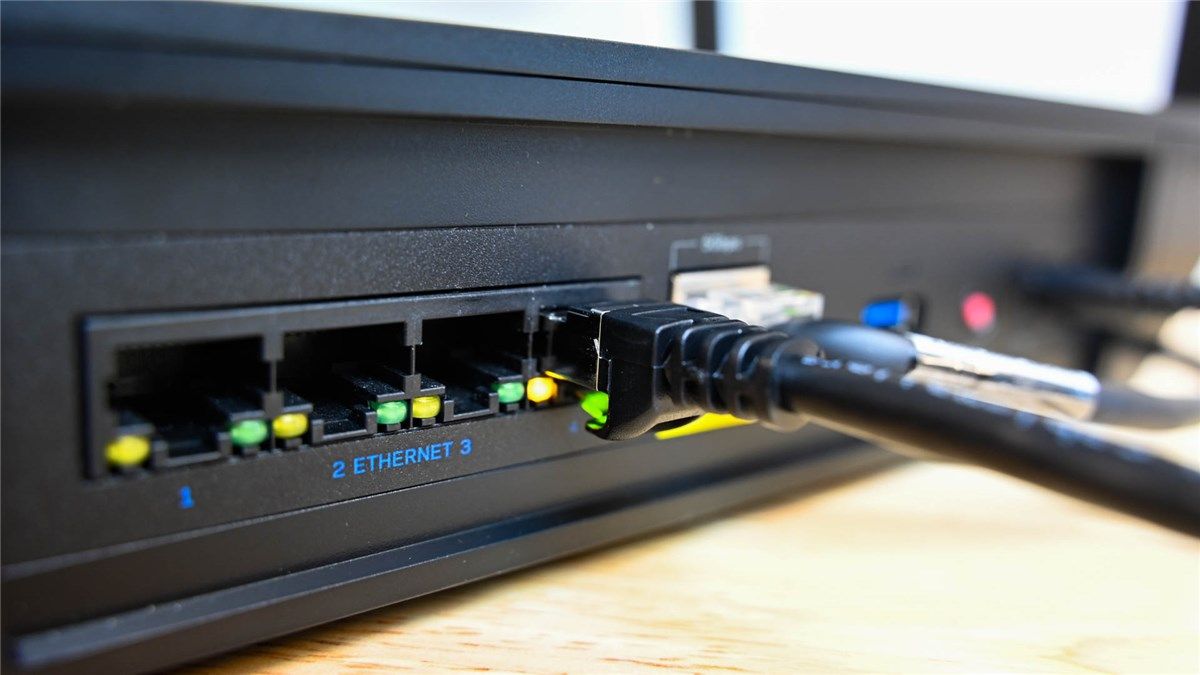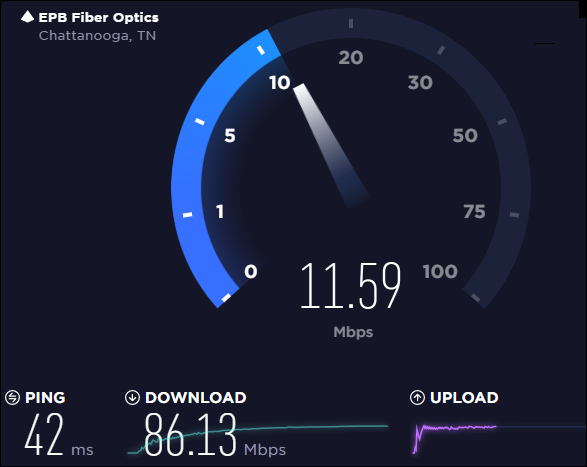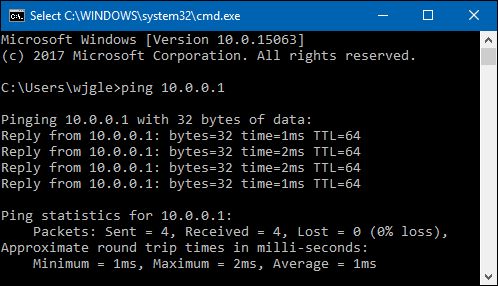Quick Links
Key Takeaways
Wired Ethernet connections are faster, more reliable, and have lower latency than wireless connections. You should use a wired connection whenever it is practical if performance is a priority, although newer Wi-Fi standards like Wi-Fi 6 have narrowed the performance gap significantly.
Wi-Fi is extremely convenient for small, portable devices, but when performance is required, you cannot beat an Ethernet connection. Ethernet connections are several times faster than most Wi-Fi networks, and typically have a fraction of the latency.
Is Ethernet Faster Than Wi-Fi?
Yes, Ethernet is faster than Wi-Fi. The best Ethernet cables you'll commonly find are Cat6A cables --- they're rated for transfer speeds of 10 gigabits per second (Gbps or Gb/s), and they'll deliver that very consistently. Wi-Fi 6E, which is currently the fastest Wi-Fi officially available, can only reach speeds of a few gigabits per second. Ethernet connections are also less prone to interference and have lower latency than even the best Wi-Fi networks. If reliability and speed are the priority, Ethernet cables cannot be beat.
How Much Faster Is Ethernet?
Ethernet is just plain faster than Wi-Fi --- there's no getting around that fact. But the real-world differences are smaller than you might think. Wi-Fi has gotten significantly faster over the last few years, thanks to new standards like Wi-Fi 6 (802.11ax), which offers a maximum speed of about 9.6 gigabits per second. Even though this is a maximum speed for all your wireless devices to share (and you likely won't get those speeds in the real world), Wi-Fi has become good enough to handle most of our daily tasks.
On the other hand, a wired Ethernet connection can theoretically offer up to 10 Gbps, if you have a Cat6A cable. The exact maximum speed of your Ethernet cable depends on the type of Ethernet cable you're using. However, even the Cat5e cable in common use supports up to 1 Gbps. And, unlike with Wi-Fi, that speed is consistent.
Here is a small chart showing the best speeds you can get through different Ethernet cables and modern Wi-Fi networks.
Unless otherwise noted, the maximum speed of the Ethernet cable is the speed at the end of a 100-meter cable.
|
Connection Type |
Maximum Speed |
|
Cat5 |
100 Mbps |
|
Cat5e |
1 Gbps |
|
Cat6 |
1 Gbps |
|
Cat6a |
10 Gbps |
|
Wi-Fi 5 |
3.5 Gbps |
|
Wi-Fi 6 |
9.6 Gbps |
|
Wi-Fi 6E |
9.6 Gbps |
It is important to understand that the maximum speed listed for Wi-Fi networks is the maximum bandwidth for all devices on the network, not an individual connection. While you can reasonably expect to see transfer speeds of a few gigabits using Wi-Fi 6 or Wi-Fi 6E, you will not see 9.6 Gigabits to any one device on the network.
On the other hand, if your Ethernet cable --- and the ports on your router, modem, and PC --- are rated at 10 Gbps, you can and should expect to see that speed to every device connected.
While all that speed is great, the thing to keep in mind is that the speed of your Internet connection is the bottleneck for activities involving the Internet. If your Internet speed is significantly lower than whatever type of connection you're using, upping the speed of that connection won't matter much.
Ethernet will, however, affect the speed between devices on your network. For example, if you want to transfer files as fast as possible between two computers in the house, Ethernet will be faster than Wi-Fi. Your Internet connection isn't involved in this, so it's all up to the maximum speeds your local network hardware can provide.
Here are just a couple of good examples of when this local speed might be important:
- If you have multiple devices that back up to a NAS, backup server, or shared hard drive, backups will go faster over an Ethernet connection.
- If you have devices that stream from a media server on your network (like Plex or Kodi), an Ethernet connection will give you a considerable boost in streaming quality.
If you're curious about the difference in local file transfer speed, try transferring a large file between two computers while they're both connected to Ethernet and while they're both connected to Wi-Fi. You should see a speed difference there.
How Much Less Latency Does Ethernet Offer?
Connection speed and quality isn't just about raw bandwidth. Latency is also a big factor. In this case, latency is the delay in how long it takes for traffic to get from from a device to its destination. We often refer to latency as "ping" in the networking and online gaming worlds.
If reducing latency as much as possible is your concern---for example, if you're playing online games and need reaction time to be as quick as possible---you're probably better off with a wired Ethernet connection. Yes, there will be other latency that factors in along the Internet path between your device and the gaming server, but every little bit helps.
On the other hand, if you're just streaming videos, listening to music, or browsing the web, latency won't matter much to you.
You can test latency by running the ping command at your terminal or Command Prompt. Ping your router's IP address --- both while connected over Wi-Fi and while connected over Ethernet. Compare the results to see how much latency the Wi-Fi is adding.
In summary, with Wi-Fi, there's a bit more of a delay when signals travel back and forth between a Wi-Fi device and your wireless router. With a wired Ethernet connection, there's much less latency.
Wireless Interference and Connection Reliability
Ethernet offers a more reliable connection than Wi-Fi. It's just that simple.
Wi-Fi is subject to a lot more interference than a wired connection. The layout of your home, objects blocking the signal, interference from electrical devices or your neighbors' Wi-Fi networks---all these things contribute to Wi-Fi being generally less reliable.
This interference can cause a number of problems:
- Dropped signals: Occasionally, Wi-Fi will lose the signal and have to reacquire it. This may not be a big deal for daily browsing or even streaming video (which gets buffered on the local device), because the re-acquisition happens quickly. But if you play online games, it can get pretty irritating.
- Higher latency: Increased interference can mean higher latency, which can be a problem for all the reasons we outlined in the previous section.
- Lowered speeds: More interference also means lower signal quality, which results in lower connection speeds.
It's tough to quantify interference because it tends to ebb and flow --- especially if you're moving around with your device. However, there are things you can do to reduce wireless interference and get the best Wi-Fi signal possible.
When Does It Make Sense to Use Ethernet?
We don't mean to come down too hard on Wi-Fi. It's pretty speedy, super convenient, and perfectly serviceable for most of what we do on our networks. For one thing, Wi-Fi is essential if you've got mobile devices --- lugging around a cellphone connected to an Ethernet cable would be terrible. Also, there are times you just can't use Ethernet. Maybe it's too difficult to run a permanent, out-of-the-way cable to the location you want. Or maybe your landlord won't allow you to run cables the way you want to.
And that's the real reason to use Wi-Fi: convenience. If a device needs to move around or you just don't want to run a cable to it, Wi-Fi is the right choice.
On the other hand, if you have a desktop PC or server that sits in a single place, Ethernet may be a good option. If you want better quality streaming (especially if you're doing it from a media server on your network) or if you're a gamer, Ethernet will be the way to go. Assuming it's easy enough to plug the devices in with an Ethernet cable, you'll get a more consistently solid connection.
Gaming is one of those cases where it is always better to use Ethernet if you can.
Wi-Fi vs. Ethernet for Gaming
Gaming is --- more than most activities --- extremely sensitive to network latency. If you're playing online games and need reaction time to be as quick as possible, you're better off with a wired Ethernet connection. Yes, there will be other latency that factors in along the Internet path between your device and the gaming server, but every little bit helps.
Gamers also tend to be sensitive to highly variable latency, and that is another area where Ethernet is better than Wi-Fi for gaming. For example, a ping of 120 milliseconds (ms) isn't great in a game like Fortnite, but a ping that is rapidly fluctuating between 120 ms and 30 ms can be even worse. It is possible to compensate somewhat for a higher-than-ideal ping, but significant variability in latency makes that basically impossible. Ethernet cables reduce or eliminate latency fluctuations due to your local network. It won't stop latency due to your ISP, however.
As an example, we tested our Wi-Fi 6 network against a Cat6 ethernet. We ran four tests on each, and found the average ping of the wired connection was 16 ms with a jitter of 7 ms. The Wi-Fi connection had an average ping of 60 ms, with a jitter of 20 ms. That would present a very noticeable difference ingame.
In the end, Ethernet offers the advantages of better speed, lower latency, and more reliable connections. Wi-Fi offers the advantage of convenience and being good enough for most uses. So, you'll just have to see if any of your devices fit into the categories where Ethernet will make a difference, and then decide whether it will make a big enough difference to run some Ethernet cable.



